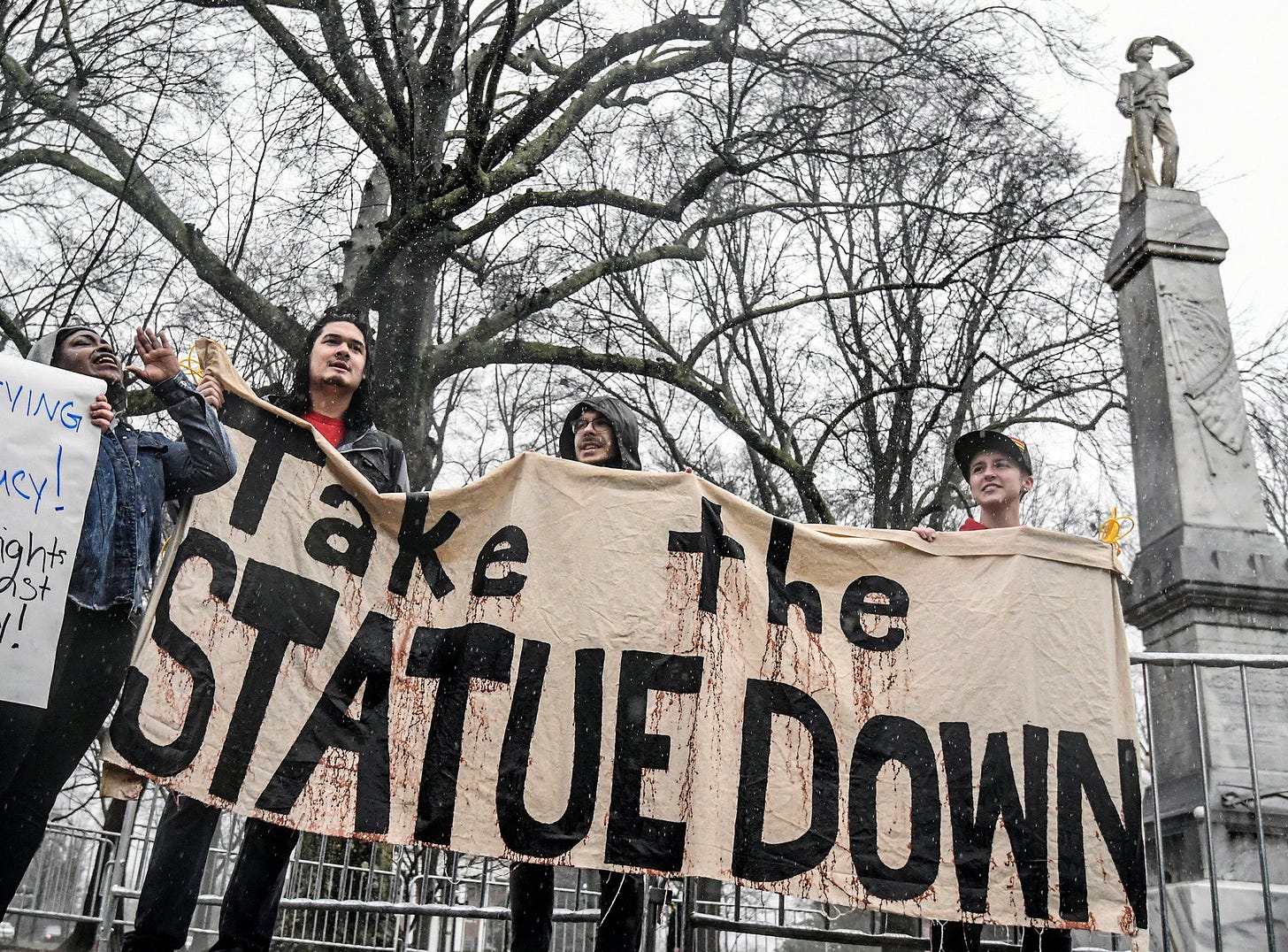Your comments are valued and always welcome by me. Over the years I’ve learned a great deal from the thoughtful comments that have been left here. I rarely ban comments, except for language or insults and threats that target other readers. Last week I used Substack’s moderation tools to temporarily suspend one reader’s ability to comment on a particular post. I didn’t realize that doing so would delete all of her comments. I am relatively new to Substack and had no idea that a 1-day suspension would lead to such a result. Unfortunately, there appears to be no way to get them back. My apologies.
I have worked hard to carve out a place on social media where I can talk about my passion for the Civil War era, historical memory, and history education. I’ve been writing and teaching about the controversy surrounding Civil War monuments, the Confederate flag, and other controversial subjects long before they became popular topics of conversation.
My goal has been consistent throughout: to help my students and the public better understand the relevant history and to help place current debates/discussions about the Civil War era and its legacy in broader context. In addition to writing about it on social media, I’ve written books, published numerous op-eds, and have engaged the public through lectures and other presentations. The most important work that I have done, however, has been in the classroom and in teacher workshops around the country.
The focus of many discussions surrounding Confederate iconography has been centered around the question of removal/relocation. This is entirely understandable. Recent events, beginning with the murder of nine African-American churchgoers in Charleston, South Carolina in 2015, have brought this issue into the spotlight. As I have consistently maintained, these are issues that need to be discussed by the individuals/communities who are directly impacted by their presence. The question of how our public spaces should be used to remember our collective past is part of what it means to live in a democracy.
I understand why hundreds of Confederate monuments have been removed over the past few years. One of the reasons why I understand this is because there is nothing new about the removal of monuments. Our public commemorative landscapes are always evolving because our politics and values continue to evolve. Most of the time this happens away from the national spotlight, but sometimes it happens in waves that signal a profound shift in public memory.
As important as these questions are, however, they are not what primarily drive me as a historian and as an educator. Don’t ask me whether I think all Confederate monuments should be removed. Ask me how to better understand their history, grounded both in a local landscape and as part of a larger narrative of public Civil War memory.
I am interested primarily in finding ways to appreciate the complexity of the past rather than simply reducing our understanding down to a popular or catchy throwaway line.
Last week a teacher asked me if I believe the Emancipation Memorial in Washington, D.C. should be removed. I responded by discussing Frederick Douglass’s response to the memorial when he helped dedicate it in 1876. I then talked a bit about the decision to turn the memorial so that it faces the Mary McLeod Bethune monument, which was added to Lincoln Park in 1974 before providing a little historical context for understanding the protests around the memorial following the police murder of George Floyd in the summer of 2020.
If you are looking for an activist to reinforce your personal views, you’ve come to the wrong place. It’s a waste of your time and does nothing to help either of us understand the relevant history and historical memory.
Activists will continue to shine a light on monuments and other forms of public commemoration that they believe are rooted in a problematic past and no longer reflect the values that we as Americans claim to uphold. This is essential work in a democracy.
Historians and educators will continue to insist on carving out a place for reflection and a level of understanding about the past that doesn’t always find a place in our public discourse.
Ultimately, I think we are all pushing toward the same goal.





Perfectly stated. It’s hard to disagree with anything you’ve written above. I certainly think Substack has been able to cater more to these discussions than Twitter. You created a space where honest, open dialogue rather than “a catchy throwaway line” can lead to a broader discussion. That digital space, alongside museum spaces, public squares, classrooms, and battlefields is so necessary to discourse over monuments and the memory the war. So, thank you!
I not only appreciate your work as a historian but also your support of history educators. Shining a light on the work of history teachers is so critical now that they are the targets of disrespect, mistrust, and disparagement.